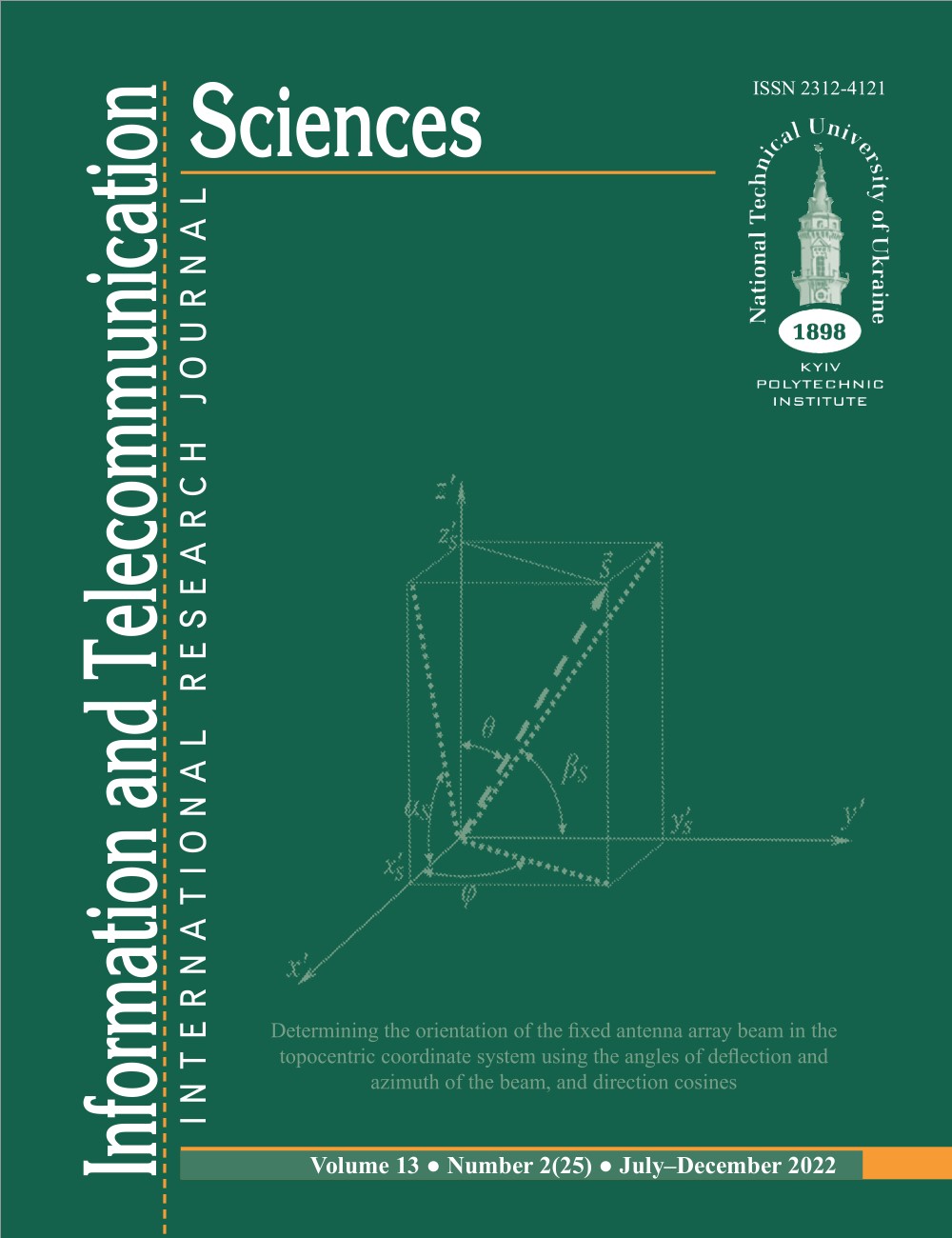SOFT FREQUENCY REUSE FOR MILIGATION OF INTERCELLULER INTEREFERENCE
DOI:
https://doi.org/10.20535/2411-2976.22022.46-52Keywords:
4G, capacity, coverage, LTE, network planning, reuse of soft frequenciesAbstract
Background. The appearance of femtocells in LTE networks has provided indoor coverage and overcome large data flows for operators. However, strong interference occurs in neighbouring femtocell users due to the limited available spectrum in cellular networks that transmit data in the same radio range. In densely deployed environments, interference issues in single-channel femtocells cause significant performance degradation. In this study, we mitigate inter-cell interference in femtocell networks by combining femtocells as a result of common interference and soft frequency reuse in downlink and uplink by moving and exchanging interfering physical blocks.
Objective. The purpose of the paper is to improve the efficiency of ensuring the quality of services in wireless networks by reducing any interference due to the distribution of traffic, which is able to provide uninterrupted connection to the user.
Methods. Enabling conditions for inter-cell interference mitigation in LTE-based femtocell networks with soft frequency reuse.
Results. Interference is a key issue in the deployment of LTE femtocells. Closely located femtocells interfere with each other if they transmit on the same frequency. Therefore, crossing femtocells and enabling them to allocate resources and reuse soft frequencies effectively reduces interference and prevents the loss of network resources. The scheme is triggered whenever the user's femto equipment experiences strong interference from neighbouring femtocells. By assigning a separate set of physical resource blocks to users at the edge of the cell, our scheme significantly reduces interference, which automatically increases cell throughput. The simulation results show the advantages of applying our scheme, in particular, the interference of the user's femto-equipment is reduced by 14% and the throughput is improved by 25%. That is, we observe a significant improvement in the performance of femtocells.
Conclusions. A femtocell crossing scheme with soft frequency reuse is presented to reduce interference between femtocells of LTE networks, which allows effectively ensuring the quality of service transmission in wireless networks by reducing interference and increasing performance through traffic distribution.
References
Dahlman E., Parkvall S., Skold J. 4G: LTE/LTE-advanced for mobile broadband. – Academic press, 2013.
Yermakov A. V., Avdeyenko G. L., Narytnyk T. M. Analysis of the possibility of using telecommunication systems of the terahertz range in transport distribution networks of the next generation // Proceedings of the International Scientific and Technical Conference "Telecommunications perspectives". – 2017.
Chandrasekhar V. Та ін. Power control in 2-tier femtocell networks //IEEE Transactions on Wireless Communications. - 2009. - Т. 8. - №. 8. - pp. 4316-4328.
Lam S. C. Et al. Performance of well-known frequency reuse algorithms in LTE downlink 3GPP LTE systems //2015 9th International Conference on Signal Processing and Communication Systems (ICSPCS). – IEEE, 2015. – pp. 1-5.
Khachirov E. F. Methods of using femtocells in 4G mobile communication systems. – 2021
Downloads
Published
How to Cite
Issue
Section
License
Copyright (c) 2022 Dmytro Mogylevych, Olha Papushoi

This work is licensed under a Creative Commons Attribution 4.0 International License.
The ownership of copyright remains with the Authors.
Authors may use their own material in other publications provided that the Journal is acknowledged as the original place of publication and National Technical University of Ukraine “Igor Sikorsky Kyiv Polytechnic Institute” as the Publisher.
ITS articles are published under Creative Commons licence:
- Authors retain copyright and grant the journal right of first publication with the work simultaneously licensed under CC BY 4.0that allows others to share the work with an acknowledgement of the work's authorship and initial publication in this journal.
- Authors are able to enter into separate, additional contractual arrangements for the non-exclusive distribution of the journal's published version of the work (e.g., post it to an institutional repository or publish it in a book), with an acknowledgement of its initial publication in this journal.
- Authors are permitted and encouraged to post their work online (e.g., in institutional repositories or on their website) prior to and during the submission process, as it can lead to productive exchanges, as well as earlier and greater citation of published work.

